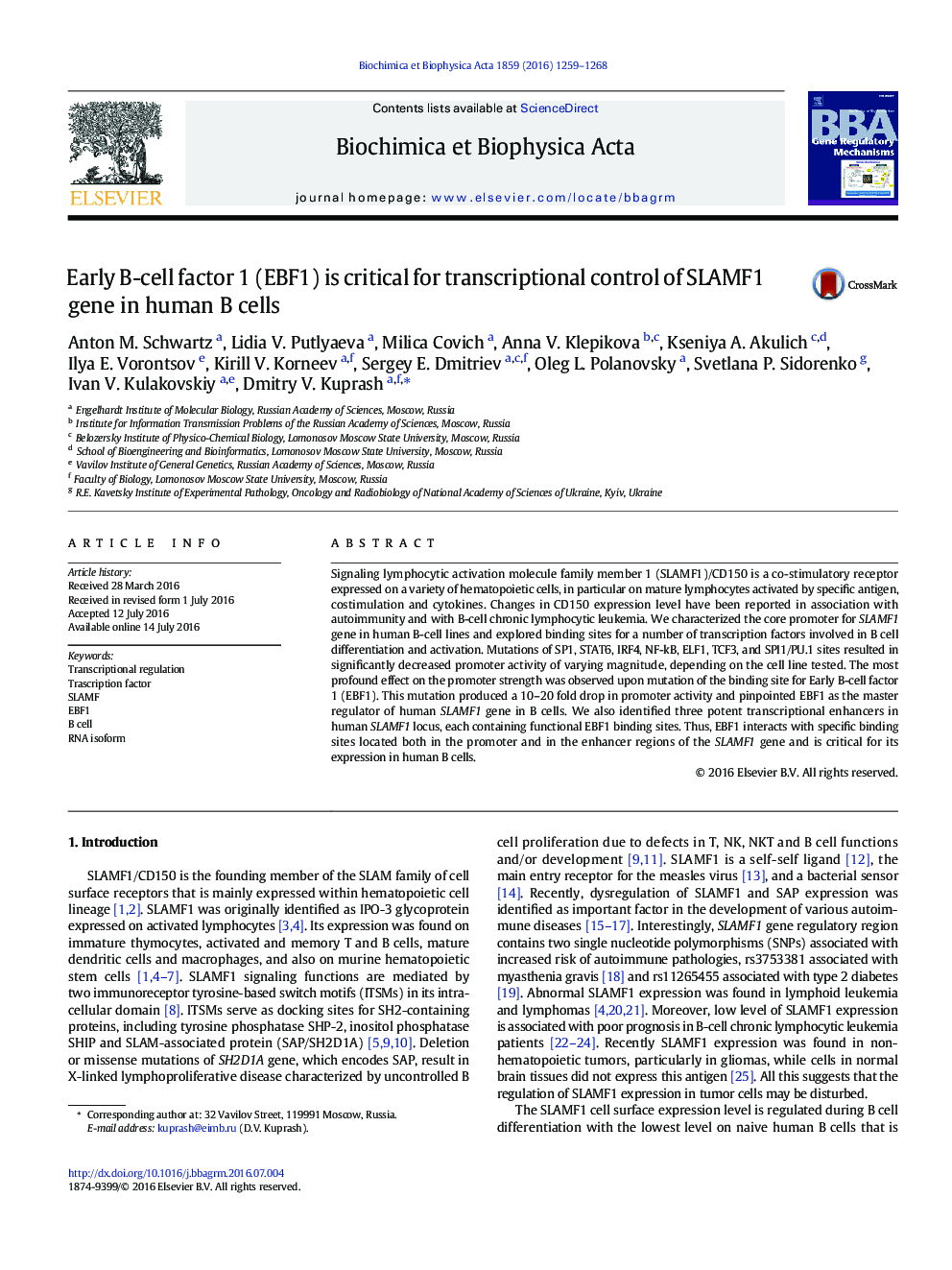| Article ID | Journal | Published Year | Pages | File Type |
|---|---|---|---|---|
| 1946282 | Biochimica et Biophysica Acta (BBA) - Gene Regulatory Mechanisms | 2016 | 10 Pages |
•SLAMF1 promoter contains binding sites for several transcription factors involved in B cell differentiation and activation.•Mutation of the binding site for EBF1 results in a most profound effect on the SLAMF1 promoter strength.•At least 3 transcriptional enhancers in human SLAMF1 locus contain functional EBF1 binding sites.•Of other SLAM family genes, SLAMF3, 4, 5, 7 are also controlled by EBF1.
Signaling lymphocytic activation molecule family member 1 (SLAMF1)/CD150 is a co-stimulatory receptor expressed on a variety of hematopoietic cells, in particular on mature lymphocytes activated by specific antigen, costimulation and cytokines. Changes in CD150 expression level have been reported in association with autoimmunity and with B-cell chronic lymphocytic leukemia. We characterized the core promoter for SLAMF1 gene in human B-cell lines and explored binding sites for a number of transcription factors involved in B cell differentiation and activation. Mutations of SP1, STAT6, IRF4, NF-kB, ELF1, TCF3, and SPI1/PU.1 sites resulted in significantly decreased promoter activity of varying magnitude, depending on the cell line tested. The most profound effect on the promoter strength was observed upon mutation of the binding site for Early B-cell factor 1 (EBF1). This mutation produced a 10–20 fold drop in promoter activity and pinpointed EBF1 as the master regulator of human SLAMF1 gene in B cells. We also identified three potent transcriptional enhancers in human SLAMF1 locus, each containing functional EBF1 binding sites. Thus, EBF1 interacts with specific binding sites located both in the promoter and in the enhancer regions of the SLAMF1 gene and is critical for its expression in human B cells.
